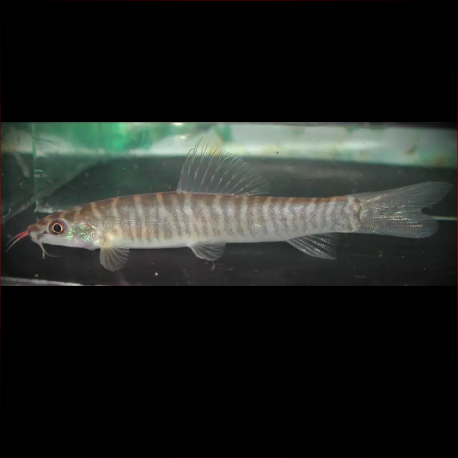More info
Datasheet
| Minimum Tank Size | 60 litres / 15.85 US gallons |
| Maximum Size | 6.1cm / 2.40inches |
| Temperature | 23°C / 73.40°F - 26°C / 78.80°F |
| Hardness | 2.02dgH / 36ppm - 12.05dgH / 215ppm |
| pH | 6.0-7.5 |
General Description
Nemacheilus Platiceps is a species occasionally found in the aquarium trade, characterized by 12-16 dark vertical bars on its body, split vertically, lips lacking furrows, an incomplete lateral line, and dark blotches on the lower half of the caudal-fin base. Originally from the Mekong river basin and the Dong Nai system, this species belongs to the Nemacheilidae family and is classified under Cypriniformes.
Aquarium Setup
The ideal tank setup for Nemacheilus Platiceps would include a mimicry of flowing streams or rivers, with a substrate of varying rocks, sand, fine gravel, and some boulders. Decorate the tank with driftwood branches to create hiding spots, and consider adding hardy aquatic plants like Microsorum, Bolbitis, or Anubias species. To replicate natural conditions, maintain high dissolved oxygen levels and incorporate water movement with power filters, powerheads, or airstones. Regular water changes of 30-50% tank volume are essential for its well-being.
Behaviour
Peaceful with conspecifics, Nemacheilus Platiceps thrives when kept in groups of four or more specimens, showcasing boosted confidence in a tank setup with suitable tankmates like peaceful, open water-dwelling cyprinids. It is recommended to avoid pairing with excessively territorial or aggressive species, ensuring compatibility for a harmonious environment.
Feeding and Diet
Being omnivorous, Nemacheilus Platiceps primarily feeds on small insects, worms, crustaceans, and zooplankton, with minimal plant matter consumption. While accepting dried foods, their diet should be supplemented with live or frozen options like Daphnia, Artemia, and bloodworm for optimal health and coloration.
Reproduction & Dimorphism
Details on the reproduction of Nemacheilus Platiceps remain unrecorded, though it's speculated that adult females may be slightly larger and heavier-bodied than males. Mature males can be identified by possessing a superficial suborbital flap.
Habitat and Distribution
In the wild, Nemacheilus Platiceps is found in slow-moving pools of hill streams and moderately fast-flowing habitats with gravel substrates in regions of Laos, Thailand, Cambodia, and Vietnam. Although specific details on its ecology are limited, it is known to prefer habitats with leaf litter accumulation and varying water flow conditions.
NOTE: Details are based on the provided information and should be referred to as a guide for caring for Nemacheilus Platiceps in aquarium settings.

